WHEN THE NET WAS STILL YOUNG: AND WHAT ABOUT THE FUTURE?
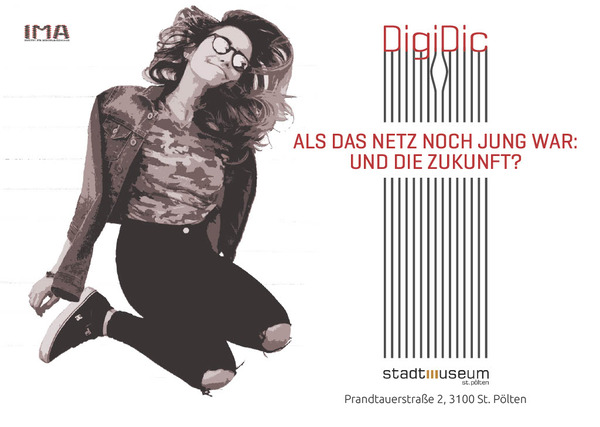
In the early 1990s and following forerunners such as Mailart, a new communicative space – the www – inspired artists to develop utopias for art taking place on the web. Since the space was unexplored and open it offered ideal conditions for experimentation. In Austria, a very active scene emerged around Ö1 Kunstradio and its protagonists Heidi Grundmann and Robert Adrian X or the group of artists HILUS. The thorough commercialisation of this once fully unoccupied space has pushed the early utopias to the background. Let’s bring them out again and catapult them into the 3rd millennium. But this also raises fundamental questions about Internet policy and its impact on society. Let’s recall the initial utopias, analyse the status quo and spin on!
Thu 26 01 2023 7pm
Pioneers
Lecture Performances, Lectures with Seppo Gründler / Mike Hentz / Eva Ursprung, Helen Varley Jamieson, Vicki Smith and Renate Kreil
Screening of the IMAficiton portraits by Heidi Grundmann and Rebekah Wilson
in cooperation with ACOnet
Lecture Performances, Lectures
From Razionalnik to RGB and The Internet of Things
by Seppo Gründler
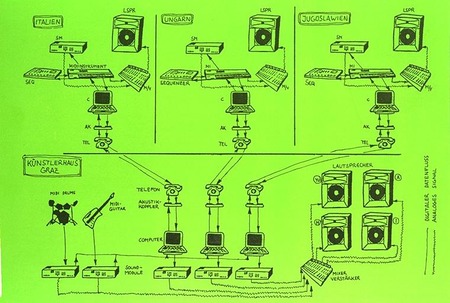
foto Razionalik/Diagramm (co Josef Klammer)
From the world’s first international net concert Razionalnik (1987) to the transnationally synchronized concert RGB (1997) by the Klammer and Gründler Duo and beyond.
BBS (Bulletin Board Systems) such as the Fidonet or Zerberus were the communication systems of choice for communicating digitally over a network before the Internet was generally accessible. In 1987 Seppo Gründler and Josef Klammer developed the first international network concert on the basis of the MODEM technology (modulator-demodulator - this enabled data to be transmitted digitally via the analogue telephone network). This start and the further development of related concerts or audio performances are the focus of the lecture. The latest developments such as zoom sessions and the like are deliberately left out. The focus is on the past when the fault lines that appeared through the use of these technologies were still visible, and the artists saw not only practical but also aesthetic and political reasons to use the net.
Van Gogh TV Van Gogh TV Pre- and Post-Trailer
by Mike Hentz
Van Gogh TV artistgroup.
Historical positioning of the projects.
The original aims and the targets.
From videoart, documentary to media art.
Early practical networks, independent productions,
and parallel distributions,
like Infermental, Frigo, Ponton, Universcity TV and other mediartprojects from end of 70ties,
till the aera of internet middle of the 90ties.
aaron‘ law - a project series and tribute to Aaaron Swartz.
by Renate Kreil
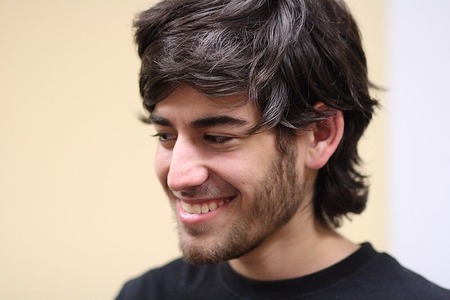
Foto SAGE ROSS
Aaron Swartz was an American computer programmer, author, political organizer, hacktivist, and Internet activist for free and open access to knowledge. (* November 8, 1986 in Chicago; † January 11, 2013 in New York City).
He worked with Tim Berners-Lee, among others, to standardize technologies on the WWW; he was technical director of the Open Library and involved in the technical development of the Creative Commons. 2023 marks the 10th anniversary of Aaron’s death - he would now be 36 years old. What do the project participants have in common? Topics such as Creative Commons, Open Source Technologies, Open Access to Knowledge and Ethics in Technology and what influence these have on net-based art production.
The title “aarons law” refers to a bill introduced in the US Congress in 2013 after his death. We want the title to convey Aaron’s spirit, his unconditionality and curiosity, which ran like laws through his life and strongly influenced his technical developments.
wikipedia.org/Aaron_Swartz
netart.cc/aarons-law
Cyberformance on UpStage
by Vicki Smith, Eva Ursprung, Helen Varley Jamieson
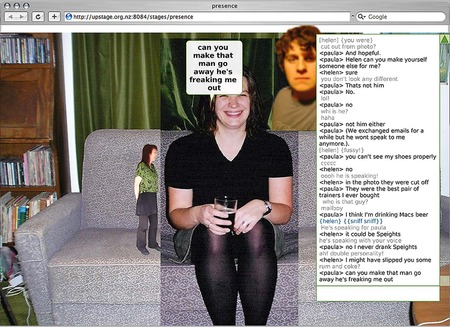
In 2001, four women met in cyberspace and formed the globally dispersed cyberformance troupe Avatar Body Collision. Frustrated by the limitations of software that was designed for other purposes, they began to imagine a purpose-built application, made by and for artists. The result is UpStage: browser-based, open source, cross-platform, accessible for audiences and easy to use.
The platform was first developed in Aotearoa New Zealand in 2003 and since then has hosted many online festivals, performances and events. From 2021 it has been re-engineered to bring it up to date with current internet and mobile technologies.
The lecture/performance is a time-travel from the very beginnings up to the planned space flight to demonstrate against mining the moon.
Performance/Lecture live online:
upstage.live/digidic
www.upstage.org.nz
FR 27 01 2023 10am - 7pm
Symposium on the history and future of the net
with Roland Alton / August Black / Aileen Derieg / Seppo Gründler / Mike Hentz / Jogi Hofmüller / Dieter Kovačič / Renate Kreil / Philip Leitner / Daniel Lohninger / Christoph Nebel / Christian Panigl / Rena Tangens / Herbert Waloschek / Rebekah Wilson / Elisabeth Zimmermann / Klaudia Zotzmann-Koch a.o.
Symposium on the history and future of the net
How does fairkom shape the future of the Internet?
by Roland Alton
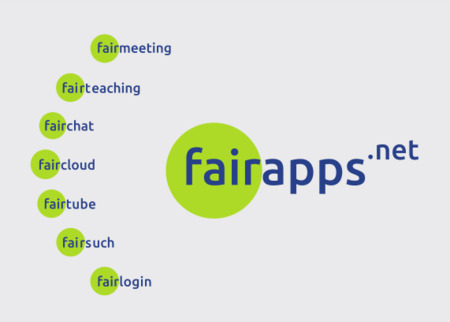
The IT landscape is more diverse than #GAFAM. The fairkom association is one of the few that offers a broad service portfolio not only to companies and the public administration, but also to associations and private individuals. These include faircloud, fairchat, fairmeeting, fairteaching, fairsuch, fairmailing or fair.tube - all accessible via the fairapps.net portal and usable with a common fairlogin account. fairkom applications are exclusively operated on servers and an own Kubernetes cluster within the EU and are therefore DSGVO compliant. All applications are based on proven open source frameworks, are uniformly named, and improvements are given back to the community. fairkom services operate data sparingly, no cookies are set for web tracking. The use of most fairkom applications follows a fair-use principle. fairkom employs eight people in Vorarlberg and a network of external specialists. All profits are invested in open source development or commons projects. With fairmove.net, a powerful Mastodon instance was launched at the end of 2022, which is part of the Fediverse with the video platform fair.tube and offers a real alternative to Twitter, Youtube & Co.
10 Bullet Points for a Future-Facing Web
by August Black
Drawing from my own personal artistic practice in web software development as well as from older practical and theoretical research into alternative web infrastructure, I will highlight roughly 10 statements that are meant to generate conversation about how the web formed, where its development might be headed, and how we might better apply our current energy to build a more elegant future network infrastructure.
When your email address is older than you are
by Aileen Derieg
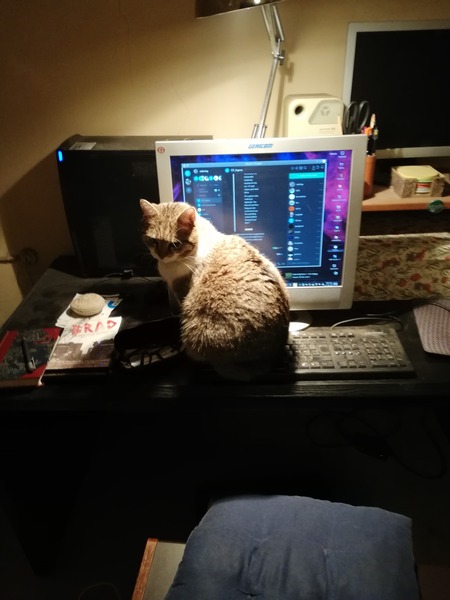
servus is an art and cultural initiative that began as a community server in 1996. Anyone with a servus.at email address who was born after 1997 is younger than their email address. How does communication work among people of different generations, who take very different things for granted? How do we share knowledge and skills or even take one another seriously, if our starting points are so different? How does someone, who remembers when email was a new thing, explain to someone who thinks it is an outmoded old-fashioned technology and vice versa? These kinds of questions don’t only apply to email, but also analogously to so many of the ways we all use the internet and even to hardware and cables. Do you have to know the history of the internet to shape its future? Can you even imagine a future if you were part of its history?
When the net disappears
by Seppo Gründler
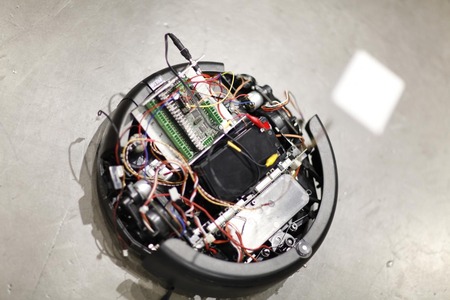
foto netz_verschwindet (co Musikprotokoll)
Technological systems and products often have the habit of evolving from a striking novelty to mundane tools, their use often invisible to ordinary people, but indispensable in everyday life. Their special features are clearly visible in the beginning and therefore also discussed in their consequences for social and economic contexts. This often goes hand in hand with processes of mostly private appropriation and the withdrawal of democratic control. Based on a brief review of the development of our technical means of communication, we look at the current development. We focus in particular in the field of electronic, digital communication, especially the Internet and related systems and how their impact is concealed.
From the individual artist signature to the networks.
by Mike Hentz
The devellopement of artistic research over the years and possible prototypes for the future.
Responsabilities for the coming art as research on culture.
Identities in globalisme, and the private and publics labs and think tanks.
Who do we belong to ?
A plea for small-scale
by Jogi Hofmüller
We almost take it for granted that multinational mega-corporations determine the rules of the game on the Internet and present themselves as the only alternatives that bring salvation. That doesn’t have to be the case, it wasn’t always like that and the internet is actually quite different.
GAFAM - Google Amazon Facebook Apple Microsoft - or more current GAMAM, after Facebook is now called Meta refers to the big five in the Internet business. Politically active hackers have been proclaiming the GAFAM-free Internet for many years and are copying tools of the big five as free software. A new/old understanding of the internet emerged a few years ago with the Fediverse and its most famous component called Mastodon. Federation is the keyword, and it’s only new to a limited extent, because the email system, which has been declared dead for years, is one of the best examples of a federated system.
Symposium Contribution by Dieter Kovačič
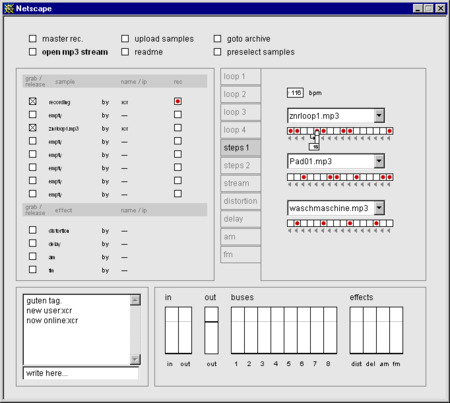
klingt.org was launched in the first days of 2000 by Dieter Kovačič. Started as a collaborative online music installation in the surroundings of the Viennese cultural provider Public Netbase, the server quickly developed into a platform off the beaten track for the electronic music scene in Vienna and beyond.
Since then, not only society but also the internet has changed rapidly. Or vice versa: Since then, not only the internet but also society has changed rapidly. Networked digital communication is and always has been part of both: the problem and the solution. Artistic activities in this context must be constantly rethought in order to have potential relevance for society and be more than just an ornament.
In his contribution to the symposium, Dieter Kovačič reflects on and associates with the possibilities and effects of the interplay between artistic and technical activities.
who is who
by Philip Leitner
when we needed to know those ip’s
the domain name system as central source of
information, alternative DNS root servers
and how you avoid tracking and advertisment
through filtering
From the practice of work for fundamental and human rights in the digital field
by Daniel Lohninger
Technology changes our society. Existing systems of power and realities of life are reorganised. Humanity is in the middle of digitalisation. Everything is digitally measured, stored, analysed and processed. The continuous change and optimisation of our society raises the question, to what extent we are still using technology and how far the technology dominates us.
The ongoing discourse between rulers and populations about security and freedom, democracy and citizens’ rights has arrived in the digital space. Internet, social media, and digital information have a larger influence on our lives than ever before. For this reason, citizens’ rights have to be maintained also concerning digital matters. Countries, enterprises, and organisations abuse the insufficient and unclear legal situation in digital matters to a certain extent which means that the citizens keep losing rights. These are rights that are taken for granted in a democracy but they find little to no space in the digital world.
epicenter.works tries to find ways forward based on human rights amidst all this change. We see ourselves as representatives of interests for basic and freedom rights and we stand up for a strong voice of the civil society and we advocate for a responsible and reasonable management of the opportunities and risks of technology.
epicenter.works is at the center of an ongoing movement where change happens and that carries its waves outward – outward to you, the citizens of Europe, the humans of the world. It depends on all of us to decide whether these changes lead to a society with fairer participation and a strengthening of democracy or instead will be used for suppression and manipulation by a central body. We know for certain that the critical decisions are made now, in our generation. Only if enough people join the debate there will be a chance to establish an open, participatory society in the digital age.
15 minutes is no time to formulate meaningful!
by Christoph Nebel
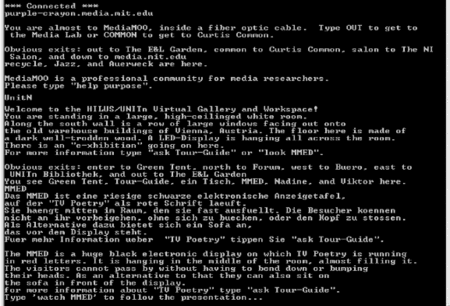
foto Gebhard Sengmüller
Local communities develop most diverse cultures over very long periods of time. With the increasing growth of such communities, artificial structures and thus rules emerge independent of long-standing experience and meaning (according to Niklas Luhmann - “meaning is ongoing actualization of possibilities”).
With the commercialization of the Internet, new technological possibilities for users to form communities emerge at ever shorter intervals. These are designed by the large corporations in such a way that the users are given the feeling of belonging to a group as quickly as possible without much time and training. Instead of a manageable size, there is a suggestive affiliation with constantly updated offers!
It is once again time to take a critical look at early models and attempts - but! The time is up!
Back to the Future - Research & Education Networks (RENs *) as an Opportunity
by Christian Panigl
When the network was young, it was shaped in large part by universities, science and research institutions, which in the course of the 1990s amalgamated into jointly funded, regional and national science networks (NRENs). Since then, umbrella organizations such as RARE->TERENA->GÉANT (geant.org) in Europe have formed an efficient coordination platform and operate continental backbone network infrastructures with powerful, transcontinental connections to their international partner organizations worldwide.
The resulting global science network infrastructure follows completely different financing and design rules than the commercial Internet. However, many interconnections (peerings), e.g. at Internet Exchange Points (IXPs) such as the Vienna Internet eXchange (VIX.at), ensure that “both worlds” can communicate seamlessly with each other.
Could science networks (again) be a breeding ground for the re-democratization of the Internet? But what are the dangers of over-regulation and its negative impact on cooperative approaches and “open standards”?
*) (N)REN = (National) Research & Education Network
Informationen sind schnell – Wahrheit braucht Zeit.
by Rena Tangens
My music should not have more meaning than warmth, light or furniture in a room, said French composer Erik Satie (1866-1925) about his „Musique d’Ameublement“. It should not push itself in the fore, should not fascinate people nor make them passive, but it should create a frame in time and space that is calm and stimulating at the same time. Rena Tangens and padeluun translated this to „Art d’Ameublement“ and transfer this idea to their work in net and political context: The BIONIC bulletin board, the design of Zerberus bulletin board server software, building of citizens’ digital networks Z-Netz, CL and Zamir, founding Digitalcourage, conceptualizing BigBrotherAwards, engagement against surveillance laws and Big Tech monopolies. The design of the software used in a network has decisive influence on net structures and how people communicate in it. Zerberus was built on the principles or „low tech“ and „low cost“, allowed non-hierarchic decentralised network structures, made censoring impossible, cared for the net as a social space and included encryption and privacy in the design as early as the late eighties.
A look back into the history of networks that flourished before the
public had even heard the term „internet“. Enjoy stories and sharing
of experience with Rena - you are welcome to use the insights gained
for the future of free and decentralized networking, for instance in
the Fediverse.
Metalab Wien
Born out of chaos
open, networked, equal
by Herbert Waloschek
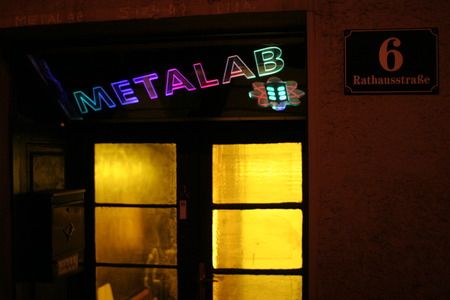
Metalab Vienna -
222m² space in the heart of Vienna for technological-creative projects, events, software, hardware, food & more…
Since 2006 the Metalab enables interaction in real space. The dream: an open world for equal individuals, space for technical-creative collaboration, for free exchange of information and knowledge, for enthusiasts, hackers, founders and digital art.
What has remained of the dream for worldwide free communication and interaction of individuals with equal rights, how has the world, the net, evolved since then?
From the “end of history”*, from a world full of hope and dreams for the future to an existential crisis for humanity"**?
Dreaming of what today?
*Francis Fukuyama
**faz.net/aktuell/wirtschaft/weltwirtschaftsforum-davos/die-welt-steuert-auf-eine-existenzkrise-zu-world-economic-forum
Producing Music Together in Real-time
by Rebekah Wilson
When we wish to create music together in real-time over the internet we are faced with performance disruptions: latency, acoustic feedback, limited transmission quality and digital artefacts—limitations that are a particular concern for performing artists who traditionally rely on proximity in physical space where these limitations are not found. Yet, these limitations and constraints can be exploited for new creative strategies that not only accommodate the inconveniences of latency and acoustic feedback but actually inspire us to adapt and transform the musical experience itself.
Successful adaptation requires plenty of time, practice and above all, a willingness to push past the initial awkward experience and see what happens when you change the way you listen. In this presentation we will learn about the experience of 3 musicians who bravely shared a number of days together via a purpose-built network music application, resulting in some beautiful songs and much laughter and insight into how we can explore new territories together.
Ö1 KUNSTRADIO: Beyond Radio
by Elisabeth Zimmermann
In December 1987, Ö1 Kunstradio went on the air as a weekly platform for radio art, founded by the journalist Heidi Grundmann. Quite naturally, artists had begun to expand their activities beyond the weekly broadcast, in the form of interventions in the programs of other ORF channels or in the appropriation of the infrastructure and networks between radio and TV, as well as the regional ORF radio studios and finally also between the radio stations of the European Broadcasting Union (EBU) and its satellites. In the increasingly international projects, the World Wide Web became more and more important. Since 1995 there has been the website kunstradio.at, designed by the Canadian artist Robert Adrian X, which to this day serves as an announcement and documentation medium as well as being one of the networked (“on air-on line-on site”) venues for some projects. Artists explore the medium of radio in its various forms (from medium wave and short wave to FM and 5.1 satellite radio to web radio and wireless technologies) and make it the object of artistic reflection, an instrument and a communication space.
An uncorrupted Internet
by Klaudia Zotzmann-Koch
When Tim Berners-Lee invented the World Wide Web in 1989, he was thinking of shared knowledge, collaboration, and the advancement of humanity as a whole.
Almost twenty-four years later, the net in its colorful perversion could be his horror vision: Surveillance of every single click for the purpose of maximizing corporate profits, platform centricity, gated communities, data retention, evaluation and resale of our bodily functions for the purpose of political persecution.
But there is another way, as the Fediverse shows. A lived future utopia in the present, decentralized and supported by many small communities and largely organized by volunteers. Whether the vision will hold has recently been put to the test since Twitter’s takeover by billionaire and management »expert« Elon Musk. Hundreds of thousands are flocking from Twitter to the Fediverse. Is this the beginning of a new, fairer, public good-oriented Internet age?
